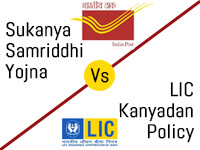- What is Pension Plans
- Explore the Benefits
- Types of Pension Plans



Buy Policy in just 2 mins

2 lakh + Happy Customers

Free Comparison



Term & Life Insurance
Himanshu is a content marketer with 2 years of experience in the life insurance sector. His motto is to make life insurance topics simple and easy to understand yet one level deeper for our readers.

Insurance & Business
Naval Goel, the founder of PolicyX is a well-recognised name in the Indian insurance and finance industry. His global overview has revolutionised the way insurance is perceived and bought by commoners in India.
Updated on Apr 08, 2025 4 min read
Post-retirement life can be very stressful if you are not financially prepared. Retirement is a time when you relax and pursue your long-held goals. So, you should buy a pension plan, also known as a retirement plan at an early age. If you do so, you will have more time to start saving for your retirement.


A pension plan, popularly known as a retirement pension plan, allows individuals to transfer a part of their income towards creating a retirement corpus. It specifically created to fulfill your post-retirement needs, such as medical and living expenditures. This insurance ensures you enjoy your post-retirement years with financial independence. The benefit payable is made in a lump sum or at regular intervals, as per the needs of the investor. These plans come with additional benefits in the form of tax deductions on income under Sections 80CCC, 80CCD(1), and 80CCD(1B).
Let's assume that you are a 32-year-old healthy person who is earning Rs. 50,000 per month. If the expected lifespan is around 80 years and you are looking forward to retiring at 60 years, then how much should you invest monthly for your retirement to get a monthly income of Rs. 50,000 during the post-retirement period?
Let's consider the inflation rate at 6%. You have to build a corpus of Rs 7.15 crore to get Rs.50,000 as a monthly income after retirement. If you plan to buy a ULIP and the returns until the age of 60 are 12% and 5% (after retirement), you have to invest around Rs. 26,000 monthly to reach the desired target.
If you start investing at 30, the monthly investments will be around Rs.20,000. This is the advantage of investing in a pension plan at an early age.
If you are not good at manual calculation, then you can take the help of a Pension Calculator.

Related Articles

Sabse Pehle Life Insurance
April, 2022
While we cannot stress enough on the importance of investing in a pension plan, the decision to buy is entirely up to you. However, if you are looking for good reasons, we have several.


Investment in pension plans guarantees a steady flow of income after retirement. However, the income will depend on your investment.
Pension plans come with significant tax respite under Chapter VI-A of Sections 80C, 80CCC, and 80CCD as per Income Tax Act, 1961.
A retirement or pension plan is a long-term savings scheme. It helps you with an annuity that you can invest further to generate a steady flow of income.
A medical emergency post-retirement can create a big hole in your pockets. Having an adequate pension plan can help you in dealing with such unwanted expenses easily.
Most of the insurance companies offer insurance cover along with basic retirement plans. This ensures that the family does not have to suffer in case of the unfortunate demise of the insured.
Pension plans are primarily savings plans, therefore, there are no risks involved.
Premiums charged by insurance companies are significantly lower for young policyholders. As you start aging, the premiums tend to increase as well.
Secure your post-retirement plans with the below-mentioned IRDAI approved Pension Plan companies.
Our team at PolicyX.com attempted to identify the best pension plans available to the citizens of India based on certain elements. The table below highlights these plans.
| LIC New Jeevan Shanti | HDFCLife Click 2 Retire | SBI Life Saral Pension | ICICIPru Easy Retirement | Max Life Guaranteed Lifetime Income | |
| Entry Age | 30-79 years | 18-65 years | 18-65 years | 18-70 years | Immediate Annuity: 0-80 Deferred Annuity: 45-80 years |
| Maturity Age | 31-80 years | 45-75 years | 40-70 years | 30-80 years | 46-90 years |
| Death Benefit | 105% of purchase price | 105% of premiums paid | 105% of premiums paid | 105% of premiums paid | 105% of purchase price |
| Key Features | Single & Joint Life Deferred Annuity | Assured vesting benefit | Life cover with SBI Life - Preferred Term Rider | Guaranteed vesting benefit | Immediate / Deferred Annuity |
| Accrued additional benefits | Market-linked returns | Guaranteed Additions for first 5 years | Unit-linked returns on equity and debt funds | Regular income payouts | |
| Rebates up to 2% for online purchase | Zero premium Allocation Charge | Vested Simple Reversionary bonus + Terminal bonus | Guaranteed pension booster | Single Life / Joint Life Annuity |
**Last Updated on April, 2022
* Key features are subject to changes as per chosen plan options
In India, there are several forms of pension plans such as deferred annuity, life annuity, immediate annuity, etc. However, Deferred Annuity and Immediate Annuity were found to be the most common plans that people opt for.
Let's take a look at the types of pension plans in detail.
| Deferred Annuity | A deferred pension scheme allows you to accumulate a corpus through normal charges or a single premium over a policy term. The pension starts once the coverage term is over. The advantages of deferred pension plans are huge and include tax benefits, which can be associated with this pension scheme. The plan suits all sorts of buyers - individuals who need to make investments systematically and people who have a bit of cash to make investments. |
| Immediate Annuity | Under an immediate annuity scheme, pension starts right away. One has to deposit a lump sum quantity and the pension will begin immediately. After the loss of life of the concerned person, his/her nominee is entitled to get the money. You could choose your annuity from distinctive annuity payout options.Moreover, you may enjoy tax benefits on the premiums paid as per Indian tax laws. |
| Annuity Certain | An annuity is paid to the annuitant for the specific tenure. The annuitant can choose the tenure period and if (s)he dies earlier than the payment term ends, the money will be paid to the beneficiary. |
| Guaranteed Annuity | As in line with this annuity choice, the annuity is given for regular intervals like 5, 10, 15, or 20 years, whether or not the person survives that tenure. |
| Life Annuity | As consistent with this annuity alternative, the pension amount can be paid to the annuitant till demise. If the annuitant chooses the "with partner" alternative, then after the demise of the annuitant, the pension can be paid to the partner/spouse. |
| National Pension Scheme (NPS) | The National Pension scheme has been developed by the government for people looking to build up pension amounts. NPS is transparent and cost-effective, wherein the pension contributions are invested in the pension fund
schemes. You may withdraw 60% of quantity at retirement and relaxation of 40% must be used to buy an annuity. |
| Pension Funds | Pension funds are an awesome way to build up a corpus amount. These are a form of long-term investments and as a result, tend to pay better. Pension Fund Regulatory and Development Authority (PFRDA) has allowed 6 corporations as fund managers. |
**Last Updated on April, 2022
One of the key features of a pension plan, annuities are payable by insurance companies either immediately or through a deferred pension scheme.
| Immediate Annuity | Deferred Annuity |
| The amount is paid by the insurer as soon as it receives the premium Option to pay the premium in a lump sum or at regular intervals |
Percentage of the amount is paid after a period of time, chosen by the policyholder Option to pay the premium in a lump sum or at regular intervals |
**Last Updated on April, 2022
The premium payment terms can vary according to the plans chosen. Different insurers tend to set different criteria; for instance, some plans offer a single premium payment option while other plans allow premiums to be paid at regular intervals.
Insurance companies usually set their own standards pertaining to a minimum and maximum sum assured. Pension plans pay out the sum assured as maturity or death benefit. The amount is paid at regular intervals as per the wishes of the insured.
It is the age when policyholders begin to receive their monthly pension. While most insurers set the maximum vesting age at 70, there are some insurers that extend it to 90 years.
Investors are offered the liberty to choose the tenure of premium payment. It is defined as the time period from when you start investing till the time you stop. The accumulated premium serves as a cushion to cover your expenses post-retirement.


The policyholder receives an additional sum assured in the event of death in an accident or as a result of one.
In the event of an unfortunate incident leading to dismemberment/disability, the insurance policy provider is liable to pay compensation to the policyholder if the rider is availed.
If the rider is availed, the policyholder is entitled to receive financial assistance if (s)he is diagnosed with any of the pre-specified critical illnesses.
Term rider essentially converts a pension plan into a regular life insurance plan in case the insured passes away during the policy period. In the event of death of the life insured, the nominee receives a death benefit.
This rider waives off future premiums payable in the event of an illness or an accident leading to disability that eventually results in loss of income.
The simple answer is as soon as possible. Ideally, you should start saving for your retirement in your 20s, when you start earning your pay cheques. That's because the sooner you begin saving, the more time you will get to collect adequate funds.
Let's understand the same with an example. You start investing at the age of 25 and keep aside Rs.3000/year to invest in a tax-deferred retirement account. By the time you reach 65, your Rs.3000 investment will grow at least Rs.3,38,000 (assuming a 7% annual return).
When it comes to retirement planning, it is advisable to keep your monthly expenses in mind. Given that your regular income is cut off, you need to carefully estimate the kind of expenses you might have post-retirement. And then, choose a plan that allows you to maintain an adequate income.
Don't forget the growing inflation rate and plan accordingly. Keep an eye on it to maintain sufficient funds for a secured lifestyle after retirement.
Before zeroing on a pension plan, do your research properly. Know what you are signing up for. Check the reviews of various plans offered by insurers along with their reputation.
Check the fees and deductions that may be applicable to the surrendering system. Basically, it's chargeable when you surrender the plan before the maturity time (in case of emergencies).
Buying a pension plan is essentially ensuring that there is a financial net for the dependents and for yourself to fall back on in the future. Based on the factors that we discussed above, you should be in a good position to calculate the financial benefit you and your family will need to meet your goals post-retirement.
Now determine the financial cover you would require to protect your future. Consider the following aspects:
The resulting amount is a fair estimation of the cover you would need.
You can assess the amount that you will need on a monthly basis post-retirement by consulting an expert. Alternatively, you could take advantage of online comparison portals and free consultations, offered by PolicyX.com.

You can log on to PolicyX.Com to buy a pension plan. Below are the steps-
Insurance companies are continuously striving to make their claims process shorter and easier. If the claimant ensures that all the criteria are met as per company regulations, filing a claim and getting the sum assured should not be a big hassle. Read ahead to find how a nominee can file a claim in India under the following scenarios:
*PoP stands for Point of Presence
**Original Permanent Retirement Account Number (PRAN) card, legal heir certificate, cancelled cheque, and claim form
For all other forms of pensions
Nominee of the deceased should:
Inform the insurer about the death with details on time, place, and cause of death.
*Death certificate of the insured, claim form, post-mortem, hospital, and attending doctor's reports
If the insured has duly paid all the premiums:
Upon nearing maturity, the insurance provider will send an intimation to the policyholder.
Age Proof:
Birth Certificate, 10th or 12th mark sheet, Driving License, Passport, or Voter ID.
Income Proof:
Salary slip, Form 16, or Employer's certificate.
Identity Proof:
Driving License, Passport, Voter ID, PAN Card, or Aadhar Card, which proves one's citizenship.
Address Proof:
Electricity Bill, Telephone Bill, Ration Card, Driving License, or Passport should mention the permanent address.
Proposal Form:
Duly filled in the proposal form is required
Medical Tests:
Some companies may require medical check-up to make sure that the insured does not suffer from any chronic illness.






















See More Life Insurance Articles










See More Life Insurance Articles
Yes, with inflation and growing healthcare costs, your PF corpus may not be able to deal with your needs long after retirement. As a thumb rule, an individual must have made investments that are 100 times the last drawn salary.
Yes, however, there are a few government limitations that you must check before making withdrawals.
You should go to your employer for that information.
Yes, NPS is one of the most trusted sources of income for people working in private or public sector jobs. You will get benefits from the equity market and a tax break of Rs. 50,000 per year (over and above the 80C limit).
Traditional pension plans, National Pension Scheme (NPS), and Unit Linked Pension Plans are the most common types of retirement pension plans.
In India, you can invest in multiple pension schemes, but there is a limit on the total amount you can contribute to all schemes each year if you want tax benefits on your contributions.
No one can answer about the best pension scheme in India as every insurer has various pension schemes with a variety of benefits.
A policyholder can change the nominee at any time during the policy tenure.
The annuity is the payouts you get from your pension plan after retirement. The annuity can be availed on a monthly, quarterly, half-yearly, yearly basis.
Amar Patil
Pune
October 9, 2024
I want to thank Shubham Sharma for his exceptional help with my term insurance query. He went above and beyond to assist me. I’m very grateful to Policyx.com and Shubham Sharma.
Sanjeev
Hyderabad
May 20, 2024
SUD Life term plan truly stands out my expectations as I got SUD Life term plan along with additional riders at very affordable premiums.
Sumit
Coimbatore
May 20, 2024
I am impresses with the hassle free and quick claim settlement process of SUD Life. Thanks to PolicyX who guided me to get my claim settled.
Barkha
Delhi
May 20, 2024
Bought SUD Life Family Income Benefit Rider plan to secure the future of my plan financially even in my absence.
Geetanjali
Kolkata
May 20, 2024
I was looking for a term plan to secure the future of my family. So I contacted PolicyX and one of their representatives Mr. Vaibhav helped me choose SUD Life term plan.
Armaan khan
Agra
May 17, 2024
I recently purchased a Pramerica term insurance policy from Policyx.com. The customer service team was very helpful in answering all my queries and guiding me through the application process. I...
Rahul Yadav
Indore
May 17, 2024
PolicyX’s dedicated support made renewing my Bandhan Life Insurance policy easy. I’m absolutely delighted with the service offered by PolicyX Insurance Advisor.
Priyanshu Sharma
Delhi
May 17, 2024
I bought a Bandhan Life Insurance through PolicyX, and I must say the level of communication and assistance I have received has been truly impressive.

 ✖
✖
Our experts will provide you with guidance and address all your concerns within 30 minutes.
Note: Choose your desired date and time slot and our expert will get in touch with you shortly.


In case you have not found your desired slot, you can visit at website and use the Request Call Back option.
You are just one step away from getting insurance.

Policyx offers a completely spam-free experience. We will never contact you unless you request us to do so.
Your call has been scheduled with Policyx for term insurance.
Talk to an advisor
February 5, 2023
Asia/Kolkata